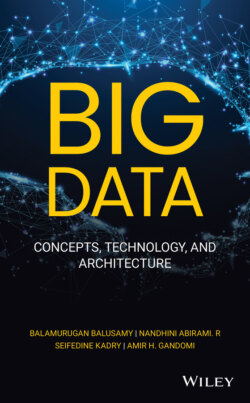Читать книгу Big Data - Seifedine Kadry - Страница 63
2.4 Relational and Non‐Relational Databases
ОглавлениеRelational databases organize data into tables of rows and columns. The rows are called records, and the columns are called attributes or fields. A database with only one table is called a flat database, while a database with two or more tables that are related is called a relational database. Table 2.1 shows a simple table that stores the details of the students registering for the courses offered by an institution.
In the above example, the table holds the details of the students and CourseId of the courses for which the students have registered. The above table meets the basic needs to keep track of the courses for which each student has registered. But it has some serious flaws in accordance with efficiency and space utilization. For example, when a student registers for more than one course, then details of the student has to be entered for every course he registers. This can be overcome by dividing the data across multiple related tables. Figure 2.12 represents the data in the above table is divided among multiple related tables with unique primary and foreign keys.
Relational tables have attributes that uniquely identify each row. The attributes which uniquely identify the tuples are called primary key. StudentId is the primary key, and hence its value should be unique. Attribute in one table that references to the primary key in another table is called foreign key. CourseId in RegisteredCourse is a foreign key, which references to CourseId in the CoursesOffered table.
Table 2.1 Student course registration database.
Figure 2.12 Data divided across multiple related tables.
Relational databases become unsuitable when organizations collect vast amount of customer databases, transactions, and other data, which may not be structured to fit into relational databases. This has led to the evolution of non‐relational databases, which are schema‐less. NoSQL is a non‐relational database and a few frequently used NoSQL databases are Neo4J, Redis, Cassandra, and MongoDb. Let us have a quick look at the properties of RDBMS and NoSQL databases.
